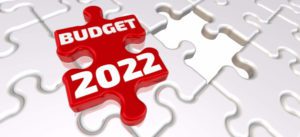Marketing and brand awareness go hand in hand. Before committing any time, effort, or funds towards marketing, you need to set a budget. The challenge you’ll face is to make the most of your budgeting dollars while getting the best return on investment. Remember for the purposes of this marketing budget our focus will be on building brand awareness so you’ll need to plan accordingly using the tips below.
Top Methods for Establishing Your Marketing Budget
1. Utilizing a Fixed Budget
One of the more manageable options for up-and-coming companies is the fixed budget method. In your first few years, the only option may be to set and stick to a number you can afford. A good place to start for new businesses is to consider adding another 5 percent to startup costs. For established businesses, you can probably expect to spend ten to twelve thousand per year depending on the industry.
With this approach, it’s essential to have a clear objective and expectations. Keep your focus narrow and don’t fall into the trap of trying to promote everything at once. With a fixed budget, you’ll likely spread yourself too thin and render all of your efforts ineffective if you try to cover everything.
A good tip for fixed budgets is to find the “one thing” that will make the most impact and direct most of your efforts there. Since we are talking brand awareness, you’re going to want to find an advertising method or channel that will give you the greatest amount of exposure for the least amount of spend.
Facebook has relatively good exposure to spending ratios and will allow you the option of engaging your potential customer organically outside of what you are spending on advertising.
2. Using a Percentage of Revenue
Generally, small and medium-sized businesses allocate anywhere from seven to 12 percent of their total revenue towards marketing. This approach is beneficial because your marketing budget isn’t “fixed”. As revenue increases, your marketing budget will grow as well.
Using the percent of revenue method also minimizes the risk of overspending. This ensures long-term profitability while reigning in overly expensive marketing campaigns.
Before using this approach, make sure your margins are above 10 percent. If you’re barely covering costs or operating at a loss, then the chances are that a percent marketing budget isn’t practical or wise.
This budgeting calculation is best for businesses that have been operating for some time.
3. The Return-on-Investment Method
Return on investment (ROI) is an approach that can help you determine the effectiveness of your marketing efforts. Calculating ROI gives you a much better understanding of how your marketing campaigns impact your budget.
As you run marketing campaigns, you need to determine what worked and what didn’t. ROI compares the gains from a marketing campaign to the costs of running it. This way, you can see if you’re spending your funds effectively.
Contact Fat Guy Media for Help with Your Marketing Budget
Building brand awareness starts with having solid marketing campaigns. However, making rash and uninformed decisions about spending your marketing dollars could result in severe losses. Use one of these three methods to determine your marketing budget.
If you need help determining the best marketing budget for yourself, contact Fat Guy Media. With a marketing budget, you know how much you can afford to spend while also figuring out where to spend each of your dollars.




